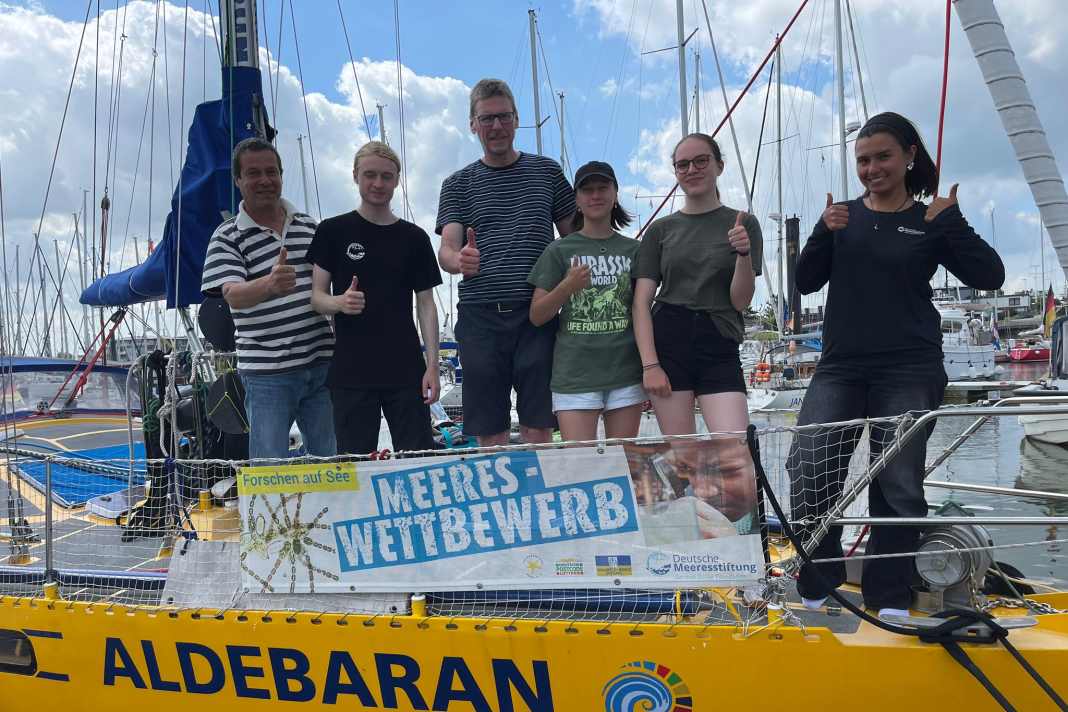





The "Research at Sea" competition is aimed at interested students from the ninth grade upwards. The school teams develop their own research ideas and apply for a one-week marine research expedition, which takes place in the summer. The most innovative teams are then selected by a jury and subsequently realised. Every year since 2005, the competition has been getting pupils interested in the sea as the largest ecosystem on our planet.
This year's projects
This year, a team of schoolgirls from Amandus-Abendroth-Gymnasium in Cuxhaven set off from there to investigate the extent to which over-fertilisation and the consequences of climate change are threatening the diatoms. They produce the majority of the oxygen on earth. To gather their findings, the team was equipped with a microscope, plankton nets, soil samplers and numerous sensors.
A team from the student research centre in South Württemberg investigated how seagrass meadows could absorb even more CO₂ from the atmosphere in the future and possibly even provide us with food in the future. They researched the nursery of numerous fish and other marine animals along the Baltic Sea coast.
A crew from Reutershagen secondary school researched the effects of the spread of the Australian chalk tube worm in Stralsund and the surrounding area. It multiplies very quickly due to climate change and not only affects the local flora and fauna composition, but also infests boat hulls and harbour facilities.
The "Aldebaran" - a research and media ship
Frank Schweikert has been travelling regularly with the "Aldebaran" since 1991. This is a Sonate Ovni 43, which was built by Alubat. The aluminium ship has its home port in Hamburg, where it was originally launched in 1986 and underwent a major refit in 2011. The "Aldebaran" has berths for seven people, is 13.80 metres long and 4.50 metres wide. The draught of the ship is variable due to the swivel keel and is between 0.80 and 2.50 metres. The rudder blade can also be raised hydraulically.
Equipment on board the Aldebaran
The equipment on the "Aldebaran" is exceptional. While the owners of other sailing yachts prioritise comfort or sailing performance, this special boat is different. What counts here are the possibilities that arise on board for the scientists. For example, there are two tanks in the foredeck with no less than 800 litres of fresh water. All that water is needed to clean the sensitive measuring equipment.
In addition to the research and measurement technology, the "Aldebaran" is also equipped with a workstation that allows the events on the boat to be comprehensively processed by the media.
